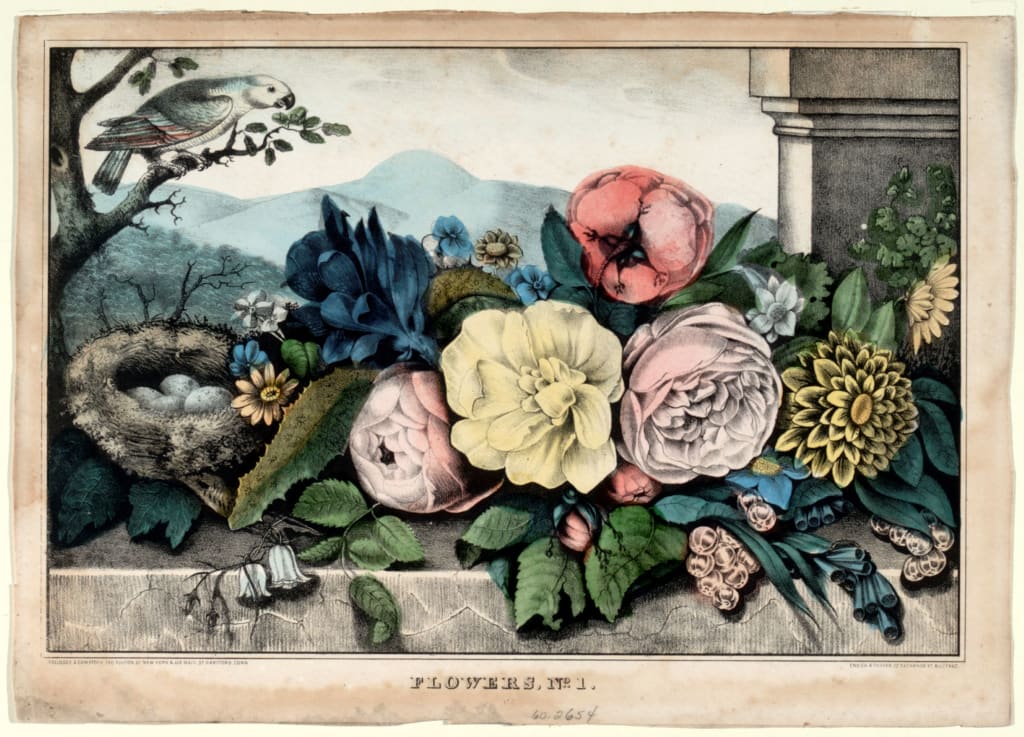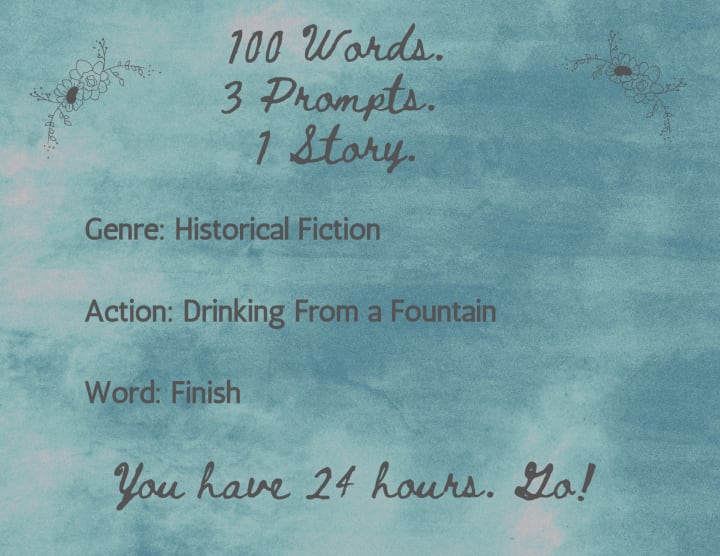
Hidden in the Flowers
Acting as a proper woman, Ada strolls the arboretum. She recognizes its true nature, a manicured veneer over an ever-present wildness. Like her.
Corset, then bodice. Laced, tightened, secured — Ada paces herself to avoid light-headedness.
Will he be here?
Small talk with her chaperone. Amble with grace.
There! Ada shoots a discreet look at a man beside the public water fountain, finishing his drink. Henry.
Heat pulses through her.
Henry approaches, a bouquet in hand. Honeysuckle (devotion). Tuberose (lust and indulgence). Iris (trust). Sweet pea (meet me by moonlight).
Ada understands. Tonight, she will disappear into the wild.
🌺 🌺 🌺
"Hidden in the Flowers" is my submission to a 100-word micro-fiction contest hosted by NYC Midnight. It's a unique challenge. Like Vocal, it comes with a tribe of writers who are in it for a good time and are eager to share the excitement.
Much of the fun comes from the format, which is entirely unique in the world of story contests. And props to the name. "NYC Midnight" just sounds intriguing. The name comes from the contest's structure. Prompts and deadlines are all set at midnight in New York City (Eastern Standard Time).
Most writing contests launch with a single start date and due date. NYC Midnight has three for each contest. The contest upped the challenge in another way: instead of the typical single prompt, there are three!
NYC Midnight has an array of contests ranging from 100-word micro flash fiction to screenwriting. In between, there are challenges for 250-word flash fiction, 1000-word flash fiction, short story, and short screenplay. The format is slightly different for each, but the premise is similar.
How It Works
For the 100-word flash microfiction, a writer starts by entering the contest. Once registered, the writer is sent the prompt at precisely midnight in NYC on the designated date. I live in Mountain Standard Time, so it was emailed to me at 10 p.m.
For this particular contest, there were more than 6000 entries. Entries are divided up into groups of 58-61 (ish) writers. Each group has its own set of unique prompts. The prompts include a:
- Genre: E.g. historical fiction, fairy tale, horror, romance, etc.
- Action: E.g. swimming in the ocean, riding a horse, smelling a rose, etc.
- Word: E.g. locket, dog, gold, watch, soil, etc.
Once you have your prompts, you have 24 hours to submit your story. No exceptions. Again, my time zone put my deadline at 10 p.m. The longer the challenge, the more time you get. For instance, the 1000-word contest gives you 48 hours.
3 Phases
Remember all those groups? The top 15 stories are selected and assigned a point value, 1-15 depending on the placement. If your story makes the top 15, you advance to phase two. New groups are assigned. Then you receive a new set of prompts on the designated time and the 24-hour clock resets.
Again, the top 15 are selected with an assigned value. Finalists are determined by the top points from the first two phases. After that, the finalists move to phase three. New prompts, new deadlines. This is the phase that determines the final placements.
About "Hidden in the Flowers"
Because this is my time navigating an NYC Midnight contest, I'm currently a little unsure the number of entries for phases two and three (disclaimer: I may be a bit fuzzy on some other specifics. I'm new to this). I do know I enjoyed the challenge of the prompts and timeline. It also took a surprising amount of effort.
Even if I don't advance, I think I'll play around with the 100-word story format. These playful, little vignettes can turn into larger stories.

"Hidden in the Flowers" takes place in Victorian times, 1870s to be precise. Incidentally, public drinking fountains did not exist in England until the 1860s (I looked it up). Single women were usually accompanied by a chaperone (also looked it up). The use of corsets began to wane by 1880s (yes again . . . looked it up). Floriography was all the rage. I’ve always wanted to do a story involving floriography and this was the perfect opportunity.
Wish me luck!
~ ~ ~ ~ ~
If you want to catch some 100-200 word story romps, come visit me on Medium where I write fiction under a pen name.
Full Photo Attribution: Flowers №1, Harry T. Peters “America on Stone” Lithography Collection, National Museum of American History, Smithsonian Open Access
About the Creator
K. Marley
Freelancer/copywriter. Outdoor dreamer. Flirts with fiction. Chocolate freak. Awkward humans flagbearer. Sometimes I hide behind a pen name.
Reader insights
Outstanding
Excellent work. Looking forward to reading more!
Top insights
On-point and relevant
Writing reflected the title & theme
Easy to read and follow
Well-structured & engaging content
Excellent storytelling
Original narrative & well developed characters
Expert insights and opinions
Arguments were carefully researched and presented
Eye opening
Niche topic & fresh perspectives
Heartfelt and relatable
The story invoked strong personal emotions
Masterful proofreading
Zero grammar & spelling mistakes
Compelling and original writing
Creative use of language & vocab






Comments (2)
Congratulations!! This is so beautiful!
Congratulations